The Circus in Bath
- Map of the Circus
- The Circus in Bath viewed by artists
- Views of Bath by Cozens
- Gainsborough’s house in the Circus, Bath
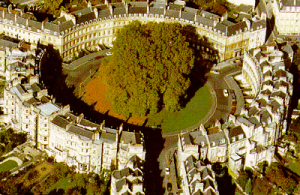
- The Circus
- Photo: Pitkin Unichrome
www.britguides.com
[click on the picture to enlarge it]
The work of John Wood the Elder (begun in 1754), this circular architectural design is meant to copy on the interior of its circumference the motifs decorating the outside of the Colosseum (the superimposed three orders of architecture with the classical disposition , Doric for the lower level, Ionic on the middle one and Corinthian on top); Smollett makes one of his characters (Matthew Bramble in Humphry Clinker) write “It looks like Vespasian’s amphitheatre turned outside in”; the vases above the attics are acorn-shaped as a reminder of Bath’s druidic origin. To preserve the sense of movement and circularity, the Circus is reached by an odd number of streets (three), so that the breaks in the colonnade are not on a single axis.
The painter Gainsborough lived there when he had his studio in Bath as a society portrait-painter.
The Circus can be seen in its surroundings.
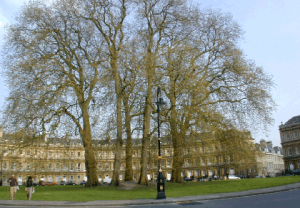
- The Circus
- Photo LGB
[click on the picture to enlarge it]
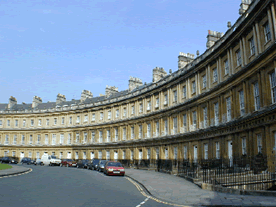
- The Circus
- Photo LGB
[click on the picture to enlarge it]
The circus can be viewed either as a continuous curved colonnade, when looking towards the middle of one of the three rows of houses (right), or as segments of a curve with openings, when looking towards one of the three streets (left, looking towards Gay Street).
The trees were added in the 19th century.
Map of the Circus
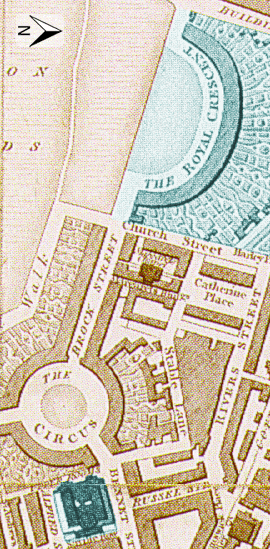
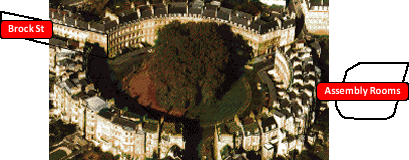
- The Circus
- Photo: Pitkin Unichrome
www.britguides.com
[click on the picture to enlarge it]
The Crescent can be seen on top of the map and the later Assembly Rooms in the lower part of the map.
The Circus is shown in eighteenth-century views.
It is mentioned in the letters of the Reverend Penrose.
The Circus in Bath viewed by artists
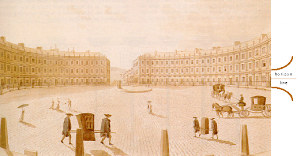
- Etching by John Robert Cozens (1773).
- [click on the picture to enlarge it]
Bath was the residence of famous society portrait-painters such as Gainsborough, who took up residence in the Circus.
The regular buildings of Georgian Bath were an inspiration for draughtsmen.
In addition to these views of the Circus, Cozens made several views of Bath, and Malton also made a view of Queen’s Square.
The two draughtsmen have selected viewpoints at different heights, as shown by the different horizon lines ( shown by the convergence of the curves of the horizontal cornices).
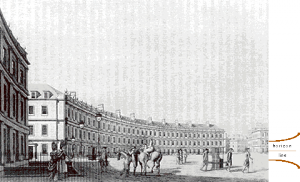
- Aquatint by Thomas Malton (1784)
- [click on the picture to enlarge it]
Cozens shows the Circus from a high viewpoint from the ground-floor windows, so as to give a plunging view over the figures with their shadows, and over the ground, emphasising its circularity.
Malton, a perspector, has selected a viewpoint at the level of the figures’ eyes, supposing the draughtsman to be on the same level, in the street.
Sedan chairs can be seen crossing the Circus. A sedan is exhibited at the Museum of Number One, Royal Crescent.
Views of Bath by Cozens
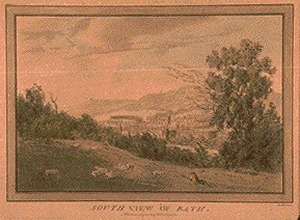
- South view of Bath
- Victoria Art Gallery, Bath
[click on the picture to enlarge it]
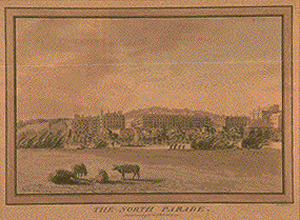
- The North Parade
- Victoria Art Gallery, Bath
[click on the picture to enlarge it]
Cozens also made views of Queen’s Square, of the Circus and of Pulteney Bridge.
The Parades were meant as a Forum on the Roman model.
Gainsborough’s house in the Circus, Bath
Gainsborough’s paintings (Bath period)
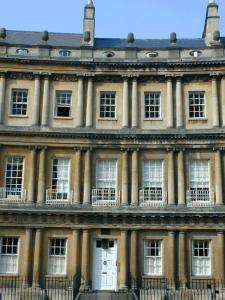
- Gainsborough’s house
- Photo LGB
[click on the picture to enlarge it]
- The painter Gainsborough in Bath
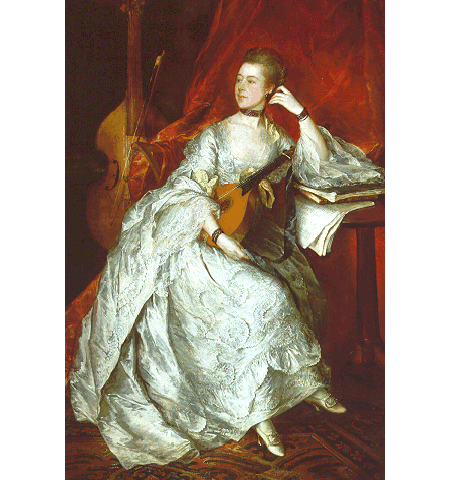
Portrait of Ann Ford. 1760 (Cincinnati Art Museum, Bequest of Mary M. Emery, 1927.396)
Ann Ford is holding a cittern; a bass viol is placed to the left.
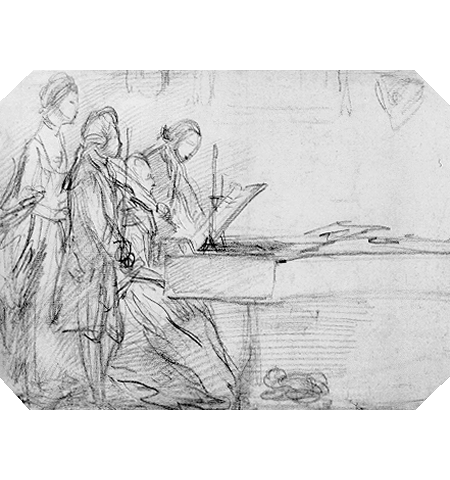
A musical party, perhaps at the Linleys’. C. 1770 (Victoria and Albert Museum Picture Library).
- The painter Gainsborough in Bath
’Friday, 26 December. We took a walk to the Circus to see Mr. Gainsborough’s paintings with which we were very much pleased.’
Diary of Elizabeth Giffard, 1766-67.
Gainsborough’s later paintings (London period)

